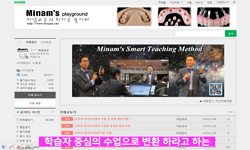공간의 사물을 관찰할 때 그것이 실물이건 사진과 같은 복제품이건 우리가 사물을 사물로써 인식한다는 점에는 큰 차이가 없다. 인간의 눈은 항상 ‘망막의 상’이라고 하는 2차원의 평면정...
http://chineseinput.net/에서 pinyin(병음)방식으로 중국어를 변환할 수 있습니다.
변환된 중국어를 복사하여 사용하시면 됩니다.
- 中文 을 입력하시려면 zhongwen을 입력하시고 space를누르시면됩니다.
- 北京 을 입력하시려면 beijing을 입력하시고 space를 누르시면 됩니다.
https://www.riss.kr/link?id=A103794337
-
저자
심복섭 (충북대학교)
- 발행기관
- 학술지명
- 권호사항
-
발행연도
2009
-
작성언어
Korean
-
주제어
Impossible Figures ; Visual point ; Ames Transformation ; 3D Model ; Visual Illusion ; 불가능도형 ; 시점 ; 애임즈 변환 ; 3차원모형 ; 착시
-
등재정보
KCI등재
-
자료형태
학술저널
- 발행기관 URL
-
수록면
233-241(9쪽)
-
KCI 피인용횟수
2
- 제공처
-
0
상세조회 -
0
다운로드
부가정보
국문 초록 (Abstract)
공간의 사물을 관찰할 때 그것이 실물이건 사진과 같은 복제품이건 우리가 사물을 사물로써 인식한다는 점에는 큰 차이가 없다. 인간의 눈은 항상 ‘망막의 상’이라고 하는 2차원의 평면정보를 3차원의 공간정보로 변환하는 과정을 동반하기 때문이다. 본 연구에서 다루는 ‘애임즈 변환’은 이렇게 평면정보를 공간정보로 변환하는 방법에 대한 조형적 고찰이다. 이 변환과정을 거치면 3차원에 재현할 수 없는 ‘불가능도형’을 3차원모형으로 재현하는 일이 가능해 지는데, 여기에는 관찰자의 시점이 깊이 관여하고 있다. 즉 불가능도형이 가지고 있는 모순된 평면정보에 시점을 개입시켜 쓸모 있는 공간정보로 변환하는 것이다. 변환을 통해 모순된 정보구조는 공간적 연속성을 확보할 수 있게 되고, 연속성이 확보된 공간정보는 3차원모형을 구축하는 단서가 된다. 이렇게 구축된 3차원모형은 열리거나 뒤틀린 구조적 변이를 통해 착시를 만들어낸다. 우리는 그것을 보는 순간 마치 자신의 뇌가 어떻게 작용하고 있는지 의식하는 것을 즐기기라도 하듯 묘한 혼란에 빠진다. 그리고 이를 통해 조형적 호기심과 즐거움의 충족은 물론 뇌의 움직임에까지 간섭하려는 심리적인 의도를 직감할 수도 있다. 본 연구는 불가능도형의 불가사의한 매력을 작품에 담거나 애임즈 변환으로 풀어내는 여러 예술가의 시도와 족적을 통해 그 조형적 의미와 가능성을 제고하기 위한 것이다. 이는 시각예술분야에 대한 일시적인 주목이 아니라, 애임즈 변환이 조형활동과 조형교육에 있어 혁신적 사고와 발상의 전환을 가능하게 하는 매력적인 존재이며 나아가 여러 분야에서 활용 가능한 기초조형의 근거로 이해될 수 있기 때문이다.
다국어 초록 (Multilingual Abstract)
When we observe an object of space, we can recognize it as an object regardless if it is the real object or a duplicate. That's because our eye processes the 2D information 'the image on the retina' into a 3D space information. In this study I look a...
When we observe an object of space, we can recognize it as an object regardless if it is the real object or a duplicate. That's because our eye processes the 2D information 'the image on the retina' into a 3D space information. In this study I look at how Ames transforms the plane information into spacial information, and how to reproduce the impossible figure into a 3D model. The observer’s visual point is deeply involved. That is, it is to transform into the useful space information by involving the visual point in the inconsistent plane information of impossible figures. The plane information contradicted by transformation can obtain the spatial continuity, and the space information of continuity becomes a trace for implementing the 3D model. Such the implemented 3D model has the physical characteristics of the structural imperfection. When we look at it we falls into a strange confusion, like enjoying knowing how the brain works. Through it, we can satisfy our curiosity and enjoyment and can directly feel a psychological intention of trying to intervene even in the brain’s process. This study is intended to improve the formative meaning and possibility through many artists’ attempts and traces that contain the impossible figures’ mystery attraction or is interpreted by Ames transformation. It is because this is not a temporary observation for the visual art field, but is the attractive existence which can transform the innovative thinking and idea in the formative activity and the formative education. Furthermore, it can be understood as the base of available Basic Design and Art in many fields.
참고문헌 (Reference)
1 조열, "착시디자인" 브랜미술 1996
2 E.H.곰브리치, "예술과 환영" 열화당 1994
3 리처드 D. 자키아, "시지각과 이미지" 안그라픽스 2007
4 루돌프 아른하임, "미술과 시지각" 기린원 1993
5 심복섭, "기초조형에 있어서 비주얼 일루전에 의한 입체,공간표현 연구" 한국기초조형학회 5 (5): 469-481, 2004
6 E.Bruce Goldstein, "감각과 지각" 시그마프레스 2000
7 M.C. Escher, "超感覺ミュ-ジアム" 日本經濟新聞社 1999
8 ブル-ノ-エルンスト, "視覺の冒險-ありえない圖形" TASCHEN 1996
9 下修信輔, "視覺の冒險" 産業圖書 1998
10 松田隆夫, "視知覺" 培風館 1998
1 조열, "착시디자인" 브랜미술 1996
2 E.H.곰브리치, "예술과 환영" 열화당 1994
3 리처드 D. 자키아, "시지각과 이미지" 안그라픽스 2007
4 루돌프 아른하임, "미술과 시지각" 기린원 1993
5 심복섭, "기초조형에 있어서 비주얼 일루전에 의한 입체,공간표현 연구" 한국기초조형학회 5 (5): 469-481, 2004
6 E.Bruce Goldstein, "감각과 지각" 시그마프레스 2000
7 M.C. Escher, "超感覺ミュ-ジアム" 日本經濟新聞社 1999
8 ブル-ノ-エルンスト, "視覺の冒險-ありえない圖形" TASCHEN 1996
9 下修信輔, "視覺の冒險" 産業圖書 1998
10 松田隆夫, "視知覺" 培風館 1998
11 ジョン P.フリスビ, "シ-イング" 誠信書房 1994
12 ブル-ノ-エルンスト, "グラフィックの魔術" TASCHEN 1993
13 ブル-ノ-エルンスト,坂根嚴夫, "エッシャ-の宇宙" 朝日新聞社 2005
14 M.C.에셔, "M.C.에셔, 무한의 공간" 다빈치 2004
동일학술지(권/호) 다른 논문
-
자기진술로서 시각디자인전공 졸업프로젝트의 의미와 교육체계
- 한국기초조형학회
- 이주훈
- 2009
- KCI등재
-
양적정보(量的情報)를 제공하는 GUI 도상표현의 수용성 분석과 해석
- 한국기초조형학회
- 이진혁
- 2009
- KCI등재
-
- 한국기초조형학회
- 한세영
- 2009
- KCI등재
-
- 한국기초조형학회
- 김상욱
- 2009
- KCI등재
분석정보
인용정보 인용지수 설명보기
학술지 이력
| 연월일 | 이력구분 | 이력상세 | 등재구분 |
|---|---|---|---|
| 2027 | 평가예정 | 재인증평가 신청대상 (재인증) | |
| 2021-01-01 | 평가 | 등재학술지 유지 (재인증) |  |
| 2018-01-01 | 평가 | 등재학술지 유지 (등재유지) |  |
| 2015-02-09 | 학술지명변경 | 외국어명 : Bulletin of Korean Society of Basic Design & Art -> Journal of Basic Design & Art |  |
| 2015-01-01 | 평가 | 등재학술지 유지 (등재유지) |  |
| 2011-01-01 | 평가 | 등재학술지 유지 (등재유지) |  |
| 2009-01-01 | 평가 | 등재학술지 유지 (등재유지) |  |
| 2006-01-01 | 평가 | 등재학술지 선정 (등재후보2차) |  |
| 2005-01-01 | 평가 | 등재후보 1차 PASS (등재후보1차) |  |
| 2003-01-01 | 평가 | 등재후보학술지 선정 (신규평가) |  |
학술지 인용정보
| 기준연도 | WOS-KCI 통합IF(2년) | KCIF(2년) | KCIF(3년) |
|---|---|---|---|
| 2016 | 0.33 | 0.33 | 0.34 |
| KCIF(4년) | KCIF(5년) | 중심성지수(3년) | 즉시성지수 |
| 0.34 | 0.34 | 0.512 | 0.08 |




 KCI
KCI DBpia
DBpia






